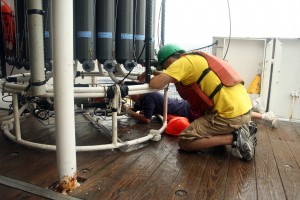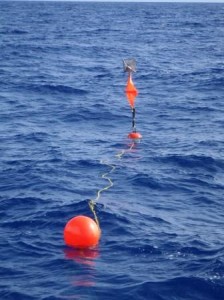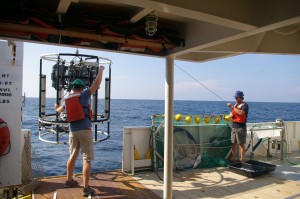
Two weeks at sea is all some oceanographers get to do all of their fieldwork for the year. Two weeks, give or take a grace day, including whatever Mother Nature has to throw at the ship. Granted, it’s work 24 hours a day, likely running several experiments at a time. But compared to some brands of science, two weeks is barely enough to say you know what system you’re working in, let alone describe ecological processes at work. To me, someone who employs anthropological methods just as often as ecological ones, anything less than a year doesn’t count as fieldwork. I’m not judging; it’s just a difference in philosophy and feasibility. After participating in one of these two week cruises, I am no less in awe that our understanding of the ocean comes from such a philosophy. Achieving solid results requires such a carefully orchestrated dance in order to work, I’m shocked that we got as much out of the cruise as we did.



